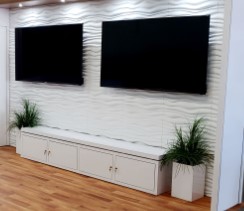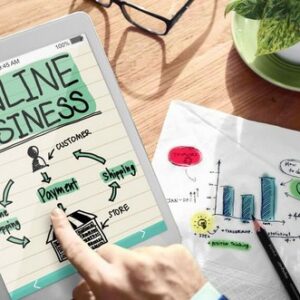Trade shows are among the most significant opportunities for companies to showcase their products, meet potential customers, and build brand awareness. However, the success of a trade show booth isn’t just dependent on the design, products, or even the technology used. The real secret to success lies in how well the team behind the booth performs.
Having a well-trained, engaged, and confident team at your trade show booth can make all the difference in attracting visitors, sparking interest, and generating valuable leads. In this article, we will explore how to effectively train your team to ensure trade show booth success.
1. Understand the Trade Show Objectives
Before diving into training specifics, it’s crucial that your team understands the overarching goals of participating in the trade show. These objectives might vary depending on your company’s strategic focus, but they could include:
- Lead generation: Collecting high-quality contacts that could lead to future sales.
- Brand awareness: Making your brand visible and memorable to attendees.
- Networking: Building relationships with industry peers, influencers, and potential partners.
- Market research: Understanding customer needs and competitor strategies.
- Product launch: Introducing new products or services to a targeted audience.
By clearly defining these objectives, your team will know what success looks like, and they can tailor their approach accordingly.
2. Select the Right Team Members
When it comes to booth success, not every employee is cut out for the job. While enthusiasm is important, certain qualities should be prioritized when selecting your booth staff:
Strong communication skills: Booth staff need to be able to articulate the benefits of your products and services effectively.
Industry knowledge: Your team should have a solid understanding of the market, your product features, and potential customer pain points.
Personality and enthusiasm: Your team should have engaging, positive personalities that encourage visitors to approach the booth.
Sales capability: While not all booth staff need to be seasoned salespeople, they should be capable of moving prospects through the sales funnel.
Having the right mix of skills and personalities in your booth is vital to creating a welcoming, professional atmosphere that draws in visitors.
3. Pre-Trade Show Training: Product Knowledge
A major component of trade show booth success is having a deep understanding of the products or services being showcased. There’s nothing more off-putting to a potential client than approaching a booth and asking a question, only to be met with uncertainty or lack of knowledge. Therefore, thorough product training is essential.
To ensure your team is prepared:
Conduct product demos: Provide team members with hands-on experience. Allow them to interact with the product, understand its features, and see it in action.
Create a FAQ document: Anticipate common questions and have answers prepared. Encourage your team to practice responses to these questions.
Highlight key selling points: Ensure your team is aware of the most compelling aspects of your product. These are the features and benefits they should emphasize when speaking with visitors.
The more knowledgeable your team is, the more confident and persuasive they’ll be when engaging with prospects.
4. Pre-Trade Show Training: Understanding the Customer
Trade show attendees typically have specific needs and goals when visiting booths. To train your team effectively, it’s important to instill an understanding of who the potential customers are and what they might be looking for.
Create customer personas: Develop detailed customer profiles or personas to help your team understand the different types of people they may encounter. These personas should include details such as demographics, job titles, pain points, and goals.
Teach active listening: Emphasize the importance of listening to your prospects. This not only builds rapport but also allows your team to better understand the needs of each visitor. Active listening helps to tailor conversations and product recommendations.
Train on qualifying leads: Your team should know how to qualify leads based on specific criteria. These might include budget, decision-making authority, timeline, and fit with your product or service. Having a clear understanding of the ideal customer profile will help the team prioritize high-quality leads.
By better understanding your customers, your team will be able to build stronger relationships and deliver personalized solutions.
5. Sales Training: Engaging and Converting Leads
At a trade show, your booth is not just a display; it’s an active selling environment. Sales training is essential for converting the attendees into qualified leads or even sales.
Teach the “elevator pitch”: Your team should be able to succinctly explain who you are, what you offer, and why it matters in a matter of seconds. This brief introduction is key to capturing the attention of visitors.
Practice pitching: Have your team role-play with each other, simulating real trade show interactions. This will help build confidence and ensure that they are prepared for every situation.
Focus on solutions, not products: Train your team to position your product as a solution to a visitor’s problem. Rather than simply listing features, your team should emphasize how your product addresses the visitor’s specific pain points.
Encourage relationship-building: Rather than rushing through a sales pitch, emphasize the importance of relationship-building. Focus on understanding the visitor’s needs first, then offer solutions accordingly. This approach will make prospects more receptive to your message.
Effective sales training helps to ensure that your team is not only engaging visitors but also moving them toward a positive action.
6. Booth Etiquette: Professionalism and Approachability
Booth etiquette can make or break the visitor’s experience at your booth. Your team’s demeanor, actions, and overall professionalism will influence how potential customers perceive your brand.
Always be approachable: Your team should actively engage visitors with a warm, friendly demeanor. Encourage them to stand rather than sit, as sitting can create a barrier between staff and potential customers.
Be mindful of body language: Non-verbal cues can communicate a lot about your team’s attitude. Train staff to maintain eye contact, smile, and avoid crossing arms or appearing disengaged.
Avoid distractions: Your team should avoid looking at their phones, checking emails, or engaging in personal conversations while at the booth. This behavior can give the impression that they’re uninterested or unprofessional.
Respect visitors’ time: Train your team to read the situation. If a visitor seems uninterested or in a rush, respect their time by offering a quick introduction and an opportunity to follow up later.
Creating a welcoming, professional, and respectful environment at your booth will increase the chances of drawing in attendees and fostering positive interactions.
7. Post-Trade Show Training: Follow-Up Procedures
The trade show doesn’t end when the doors close. In fact, the follow-up process is where many businesses either succeed or fail in capitalizing on the leads they’ve generated.
Your team should be trained on effective post-show follow-up strategies, such as:
Timely follow-up: Set a specific timeframe for following up with leads, preferably within 24 to 48 hours after the event.
Personalized emails: Encourage team members to send personalized thank-you notes or emails referencing specific conversations or product demonstrations that took place at the booth.
Segmenting leads: Teach your team how to segment leads based on priority. High-quality leads should be contacted first, with more general follow-ups happening later.
Tracking interactions: Implement a system to track lead interactions, whether through CRM software or spreadsheets, to ensure that no lead is forgotten.
Following up promptly and effectively will increase the likelihood of converting booth visitors into actual customers.
8. Practice, Practice, Practice
Training doesn’t stop once the initial session is over. Continuous practice is essential for ensuring that your team is ready for the big event.
Run dry runs: Before the trade show, organize mock trade show days to simulate the event environment. Have team members practice engaging with visitors, answering questions, and closing deals.
Feedback sessions: After each practice session, gather feedback from team members about what worked, what didn’t, and areas for improvement.
Refine techniques: As the event approaches, encourage your team to refine their engagement techniques, presentation skills, and sales strategies.
By practicing before the show, your team will be more comfortable, more confident, and ultimately more successful.
9. Creating a Positive and Fun Atmosphere
Trade shows can be long and exhausting, but they can also be fun and rewarding. Encourage your team to maintain a positive attitude, support one another, and keep morale high throughout the event. A positive atmosphere can be contagious, making your booth a place where attendees feel excited to stop by.
Training your team for trade show booth success is an investment that can yield significant returns. By ensuring that your team is well-prepared, knowledgeable, and motivated, you increase the likelihood of attracting, engaging, and converting trade show visitors. Remember, the trade show floor is a dynamic environment that demands flexibility, enthusiasm, and strong communication skills. With the right training, your team will be able to turn every interaction into a potential opportunity, helping your company achieve trade show success.




